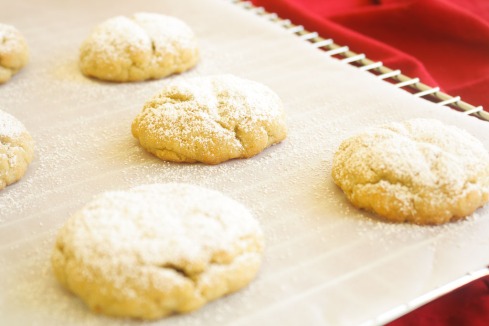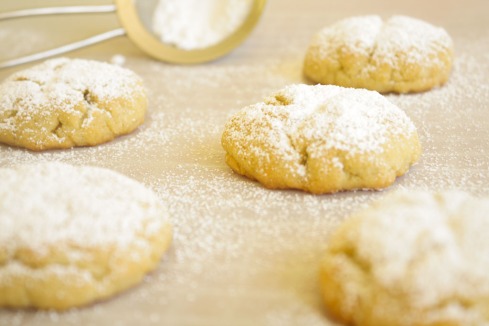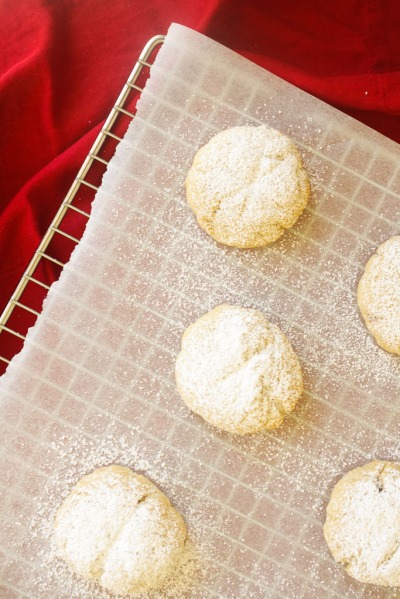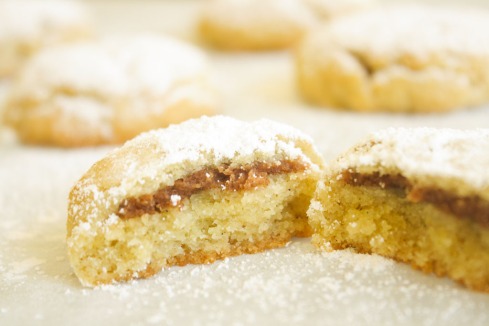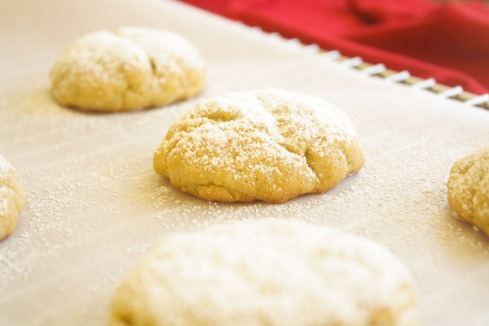While my family has always appreciated good meals, as a child, I seldom spent time in the kitchen. I cultivated my interest in food independently, experimenting with recipes, photographing, and sharing these experiences on my blog. As I grew older, my love of food and my Armenian heritage became defining aspects of my identity. I longed to learn about traditional Armenian cuisine, but did not know where to begin. That was until my great aunt, Dikranouhi Kirazian, released her new cookbook entitled Armenian Vegan.
Armenian Vegan contains more than 200 traditional Armenian recipes, including appetizers, breads, main courses, and desserts, using no animal products. For seven years, my aunt secretly labored over this book with the help of her husband, George. She told no one about the project, leaving my extended family in shock upon receiving copies in the mail.
I relished flipping through the pages, discovering recipes that I had never heard of before along with vegan adaptations of classic dishes. Dikranouhi presents a practical and healthy approach to cooking, with simple instructions and ingredients accessible to novice cooks. She writes thoughtfully, sharing personal anecdotes and the cultural significance behind certain foods.
While reading the dessert section, these walnut-stuffed cookies caught my eye. Flavored with Mahlab, ground cherry pits, and delicate rose water, Ma’amoul are ubiquitous throughout the Middle East. I substituted a few ingredients based on what I had on hand, replacing Mahlab with ground cardamom and rose water with orange blossom water.
Though somewhat time-consuming to shape, these cookies’ handmade touch contributes to their charm. While nestling the sweet walnut filling inside a pocket of supple dough, I imagined my aunt learning this technique when she was a girl. Feeling a personal connection to a recipe makes eating it so much more fulfilling. Most importantly, however, the flavors here are wonderful. Semolina flour, traditionally used to make pasta, provides a toothsome texture and tender crumb, its robustness offset by a sliver of walnut-cinnamon paste. To finish, an elegant coating of powdered sugar makes these dainty treats ideal for serving alongside a cup of tea.
Recipe adapted from Armenian Vegan
These cookies can be adapted using various nuts and spices. Possible combinations include pistachio and rose water or date and orange blossom water.
For the cookie dough:
- 2 1/4 cups farina or semolina flour
- 1 cup all-purpose flour
- 1/2 cup granulated sugar
- 1 teaspoon cardamon, preferably freshly ground
- 1 teaspoon baking powder
- 1/2 teaspoon baking soda
- 1/4 teaspoon salt
- 1 cup melted margarine or butter (for non-vegan option), melted and cooled
- 1/2 cup soy milk or cow’s milk (for non-vegan)
- 2-4 tablespoons orange blossom or rose water
For the walnut filling:
- 1 cup chopped walnuts
- 1/4 cup granulated sugar
- 1 1/2 teaspoons cinnamon
- Pinch of nutmeg
- Pinch of allspice
- Powdered sugar for dusting
Yields about two dozen cookies.
1. In a large bowl, sift the flour, baking powder, and baking soda. Add the farina or semolina flour, sugar, salt, and ground cardamom and mix thoroughly with a whisk or fork. Mix in melted margarine or butter with a spoon. Bring milk to a boil, add to the flour mixture, and mix well. Knead the dough with your hands until it reaches a smooth pasty consistency, about 1 minute. Add the orange blossom or rose water, knead a few more times to combine. Cover the bowl with plastic wrap and allow the dough to rest at room temperature for 2-3 hours.
2. Meanwhile, make walnut filling. Place walnuts, sugar, cinnamon, nutmeg, and allspice into a small food processor. Process on high speed until the mixture reaches a moist, pasty consistency, about 1 minute.
3. Preheat the oven to 350 degrees F. Place racks in the lower and upper thirds of the oven. When the dough is ready, measure out tablespoons of dough. Roll each piece into a ball and make an indent in the center, creating a little cup. Place 3/4 teaspoon of walnut paste into the cup, flatten it, then place another flattened ball of dough on top. Seal the seams tightly but carefully with you fingers. Repeat with remaining dough. If you own a Ma’amoul mold, you may use it instead.
4. Place stuffed cookies an inch apart on a baking sheet lined with parchment paper. Bake for 10 minutes on the lower level of the oven, then transfer them to the top shelf for an additional 3-5 minutes, until lightly golden brown. Transfer the parchment onto a cooling rack, and allow the cookies to cool completely. Once cool, dust cookies with powdered sugar.
